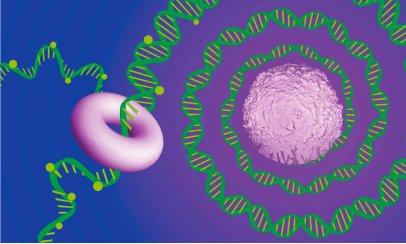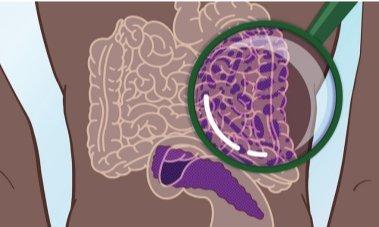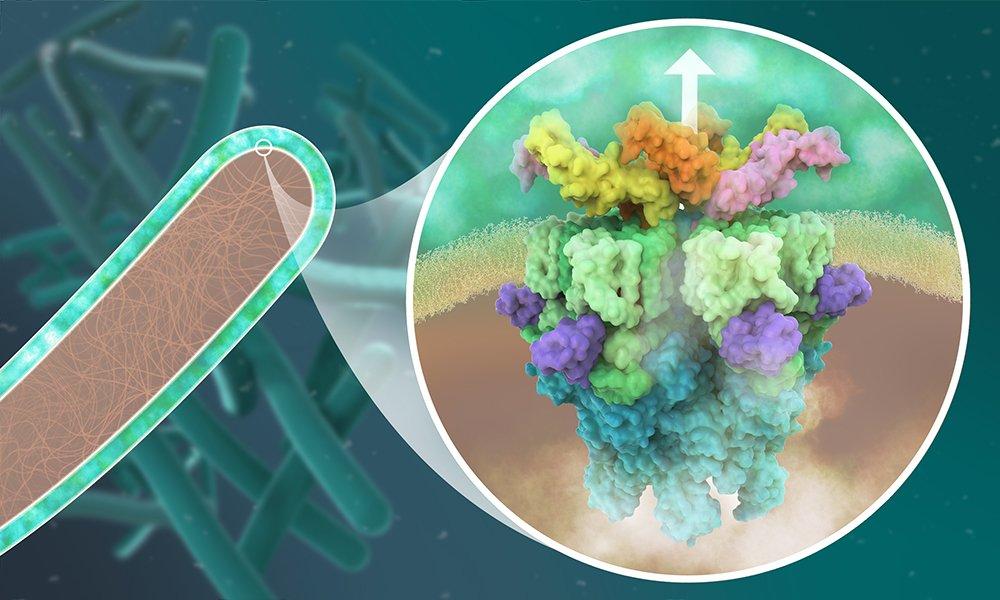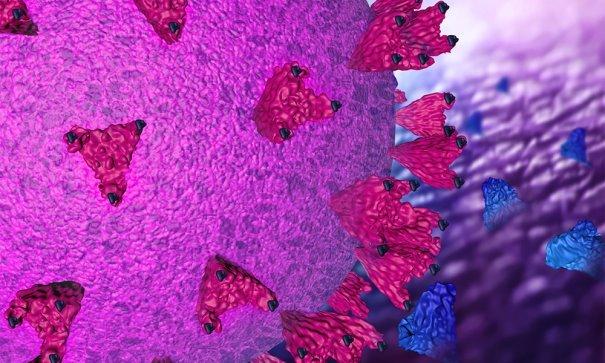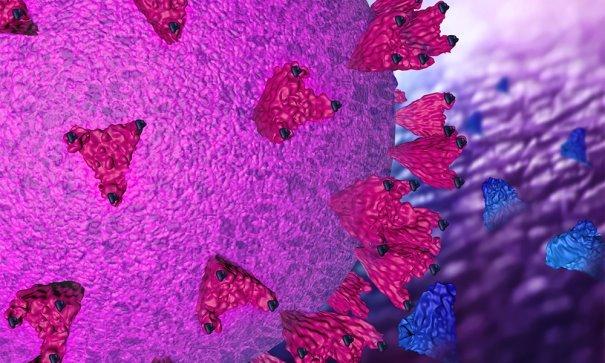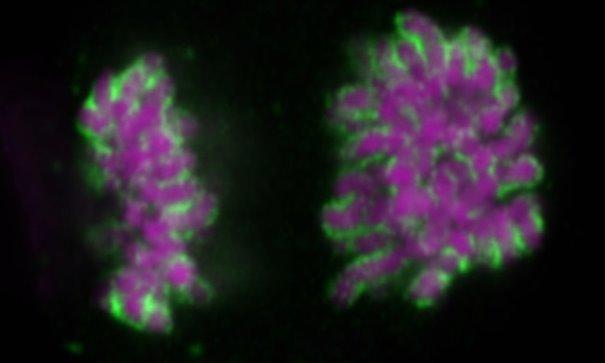-
Using artificial intelligence to discover therapeutic antibodies
Former EMBL staff scientist founds a start-up – DenovAI – for broader, faster and cheaper antibody discovery using advanced machine learning and computational biophysics Antibodies are an important tool in the human immune system’s arsenal against disease. They attach to bacteria, viruses, fungi, or toxins, marking them for destruction or removal from the body. It is this ability to recognise and mark foreign and harmful molecules and organisms that allows therapeutic use of antibodies, including treating or preventing diseases such as cancer, as well as auto-immune and metabolic diseases. But while therapeutic antibodies offer great potential, selecting a promising candidate from billions of potential antibody sequences is laborious, expensive, and,…
-
The speed of life: a zoo of cells to study developmental time
Researchers from the Ebisuya Group at EMBL Barcelona have used an unprecedented stem cell zoo to compare six different mammalian species and their developmental time. In humans, pregnancy lasts around nine months. In mice, only 20 days, and in rhinoceroses, as long as 17 months. Although many mammalian species go through the same stages during embryo development, the speed of development differs substantially across animals. Another example of an event that differs in time across species is the formation of the vertebrate body axis, the spine. The formation of the body segments that will give rise to the vertebrae and ribs, called somites, is controlled by a mechanism called segmentation…
-
The ‘long read’ for cancer
Looking to learn more from genomics sequencing about DNA mutations and cancer, researchers applied a long-read approach to get a broader genomic view Just as a flashlight casts a broader beam than the brightest candle when walking along a darkened trail, so too does long-read genomic sequencing seem to clarify a broader genomic picture of DNA mutations than short-read sequencing. New EMBL research, published recently in Cell Genomics, indicates that long-read genomic sequencing can reveal important patterns of chromosomal structural rearrangement that had previously eluded the more predominant short-read sequencing used in cancer genomics. A collaboration co-led by EMBL Heidelberg, the German Cancer Research Center (DKFZ), and EMBL-EBI researchers applied…
-
EMBL Research News: International study proposes stool analysis for early detection of pancreatic cancer
Pancreatic cancer is one of the most lethal cancers due to its early local extension and metastatic behaviour. Some of the reasons for this high fatality rate are late diagnosis of the disease, especially since symptoms are unspecific and appear rather late, and limited therapeutic options. Researchers from the European Molecular Biology Laboratory (EMBL) in Heidelberg and the Spanish National Cancer Research Centre (CNIO) have found that: A genetic signature of 27 microorganisms in stool defines the high-risk population for pancreatic ductal adenocarcinoma, the most common pancreatic cancer, and could be used for early detection of the disease. This is the most comprehensive study of the influence of the microbiome,…
-
EMBL-Research: The impact of drugs on gut microbes is greater than we thought
We are one of the most medicated generations of humans to live on our planet. Cardiometabolic diseases like type 2 diabetes, obesity, and coronary artery disease continue to increase in prevalence and together constitute the highest cause of mortality worldwide. Affected people often have to take multiple daily medications for months or even years. Researchers from the Bork group at EMBL Heidelberg, working together with a European consortium involving more than twenty European institutes, have now shown that many commonly used drugs have powerful effects on our gut microbes. These include drugs used to treat cardiometabolic disorders and antibiotics. The results were published in the journal Nature. The gut microbiome…
-
Structural biology reveals new opportunities to combat tuberculosis
Tuberculosis is one of the top ten causes of death worldwide, infecting about one-quarter of the world’s population. Although it is treatable, the rise of multidrug-resistant tuberculosis poses a major threat to global health security, and has been declared by the World Health Organization as a global health emergency. Reduced access to diagnosis and treatment during the COVID-19 pandemic is expected to dramatically increase the number of tuberculosis infections. This will set global efforts to tackle the disease back several years. Tuberculosis is caused by infection with Mycobacterium tuberculosis: a bacterium that infects human lungs and other organs by using complex molecular machineries. These include protein complexes known as type…
-
Wissenschaftler identifizieren synthetische Mini-Antikörper zur Bekämpfung von COVID-19
Lama-Mini-Antikörper und ihre synthetischen Imitationen Die Fähigkeit von SARS-CoV-2, Zellen zu infizieren, hängt von den Wechselwirkungen zwischen dem viralen Spike-Protein und dem menschlichen Zelloberflächenprotein ACE2 ab. Damit sich das Virus an der Zelloberfläche festhaken kann, bindet das Spike-Protein ACE2 über drei fingerartige Vorsprünge, die so genannten Rezeptorbindungsdomänen (RBDs). Die Blockierung der RBDs hat daher das Potenzial, das Eindringen des Virus in menschliche Zellen zu verhindern. Dies kann mit Hilfe von Antikörpern erreicht werden. Nanokörper, kleine Antikörper, die in Kamelen und Lamas gefunden werden, sind aufgrund ihrer hohen Stabilität und ihrer geringen Größe vielversprechende Werkzeuge gegen Viren. Obwohl ihre Gewinnung aus Tieren zeitaufwändig ist, erlauben technologische Fortschritte heute eine schnelle Auswahl…
-
Scientists identify synthetic mini-antibody to combat COVID-19
Llama mini-antibodies and their synthetic imitations The ability of SARS-CoV-2 to infect cells depends on interactions between the viral spike protein and the human cell surface protein ACE2. To enable the virus to hook onto the cell surface, the spike protein binds ACE2 using three finger-like protrusions, called the receptor binding domains (RBDs). Blocking the RBDs therefore has the potential to stop the virus from entering human cells. This can be done using antibodies. Nanobodies, small antibodies found in camels and llamas, are promising as tools against viruses due to their high stability and small size. Although obtaining them from animals is time consuming, technological advances now allow for rapid…
-
Fighting cardiovascular disease with acne drug
Researchers from the European Molecular Biology Laboratory in Heidelberg and Stanford University have found the cause of dilated cardiomyopathy – a leading cause of heart failure – and identified a potential treatment for it: a drug already used to treat acne. The study was published on 8 September in Cell Reports. The original press release can be found here: https://www.embl.org/news/science/cardiovascular-disease/ Dilated cardiomyopathy (DCM) is a leading cause of heart failure, affecting 1 in 250 people. The disease is characterised by an increase in size of the left ventricle of the heart. The stretched heart muscle is then unable to pump blood as effectively, which can lead to irregular heartbeat, heart…
-
How to remove unwanted components from the cell nucleus
An international team of scientists has uncovered how cells remove unwanted components from the nucleus following mitosis. The results, published in the journal Nature, stem from a fruitful collaboration between the European Molecular Biology Laboratory in Heidelberg and the Institute of Molecular Biotechnology in Vienna. The press release can be found here. The organisation of cells into specific compartments is critical for their function. For instance, by separating the nucleus from the cytoplasm, the nuclear envelope prevents premature translation of immature RNAs. During mitosis, however, the nuclear envelope disassembles, allowing large cytoplasmic components such as ribosomes to mix with nuclear material. When the nuclear envelope reassembles following mitosis, these cytoplasmic…


